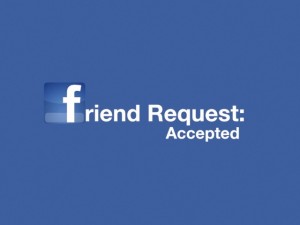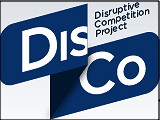A sample text widget
Etiam pulvinar consectetur dolor sed malesuada. Ut convallis
euismod dolor nec pretium. Nunc ut tristique massa.
Nam sodales mi vitae dolor ullamcorper et vulputate enim accumsan.
Morbi orci magna, tincidunt vitae molestie nec, molestie at mi. Nulla nulla lorem,
suscipit in posuere in, interdum non magna.
|
Even before the landmark United States v. Microsoft Corp. antitrust case, competition law was a bit schizophrenic when it came to the question of interoperability. Monopolists have no general duty to make their products work with those of competitors, but what about the situation where a dominant firm deliberately re-designs products to render them incompatible with others? That is the provocative question raised by several pending antitrust lawsuits filed against Green Mountain Coffee, manufacturer of the Keurig line of single-serve coffee makers and coffee “pod” products.
TreeHouse Foods alleged in a complaint last winter that after its patent on “K-Cups” expired in 2012, Green Mountain:
abused its dominance in the brewer market by coercing business partners at every level of the K-Cup distribution system to enter into anticompetitive agreements intended to unlawfully maintain Green Mountain’s monopoly over the markets in which K-Cups are sold. Even in the face of these exclusionary agreements that have unreasonably restrained competition, some companies, such as TreeHouse, have fought hard to win market share away from Green Mountain on the merits by offering innovative, quality products at substantially lower prices. In response, Green Mountain has announced a new anticompetitive plan to maintain its monopoly by redesigning its brewers to lock out competitors’ products. Such lock-out technology cannot be justified based on any purported consumer benefit, and Green Mountain itself has admitted that the lock-out technology is not essential for the new brewers’ function.
In the consolidated multi-district litigation that ensued, Green Mountain is specifically charged with designing a so-called “Keurig 2.0” brewer which features technology that allows it to detect whether a coffee cartridge is one of Keurig’s K-Cups or is made by a third party that does not have a licensing agreement with the company. The machine will not brew unlicensed coffee pods.
The federal court overseeing the MDL cases denied the plaintiffs’ motion for an injunction on procedural grounds in September, issuing an opinion which reasoned that commercial success of the “2.0” brewers was uncertain and that coffee competitors would still have open access to some 26 million Keurig “1.0” machines for several years. In other words, the court did not reach the merits of the monopolization claim against Green Mountain.

So where does that leave Keurig? As Ali Sternburg observed before revelations of its new 2.0 technology, Green Mountain’s prior 20 years of patent protection allowed the company to build a competitive advantage by “cultivating its brand (which likely involves trademark protection), honing its supply chain efficiencies, and generally maintaining its dominance due to having the first-mover advantage.” More than ten years before those patents first issued, moreover, the federal courts had ruled that new product introductions by monopoly firms — in one well-known instance, Kodak — would not be considered an antitrust violation because “a firm that pioneers new technology will often introduce the first of a new product type along with related, ancillary products that can only be utilized effectively with the newly developed technology.”
Continue reading K-Cups, Innovation and Interoperability
The French have a wonderful saying, la plus ça change, plus c’est la même chose, which roughly translates to “the more things change, the more they remain the same.” That’s an apt description of current, high-profile wrangling in the United States about music licensing under federal copyright law. Despite all the jarring changes to the recording industry over the past decade — remember Tower Records? — it’s the same issues and (mostly) the same players as always, arguing over a Rube Goldberg-like system of arcane complexity.
Today the House of Representatives (specifically the Judiciary Committee’s Subcommittee on Courts, Intellectual Property and the Internet) will hold a second round of hearings on music licensing. This inquiry coincides with a recent announcement by the Justice Department that it will review — and solicit public feedback on — the 73-year-old antitrust decrees that govern ASCAP and BMI, two groups which act as licensing clearinghouses for a range of outlets that use music, including radio stations, websites and even restaurants and doctors’ offices. As the New York Times has observed, “billions of dollars in royalties are at stake, and the lobbying fight that is very likely to unfold would pit Silicon Valley giants like Pandora and Google against music companies and songwriter groups.”

According to the consent decrees, which were instituted in 1941 after federal antitrust investigations, ASCAP and BMI cannot refuse licenses to music outlets that request them. These two “performance rights organizations” (PROs) have operated under this structure for decades, but in recent years have lost important legal cases having to do with licensing. Earlier in 2014, for instance, ASCAP lost a rate-setting case against Pandora in which several prominent music publishing executives were criticized harshly by the presiding federal judge. In response, major publishers like Sony and Universal Music Group have begun to openly discuss withdrawing from ASCAP and BMI, a move that would further complicate the licensing process.
Continue reading Music Licensing—La Plus Ça Change?
Tuesday was a big day in the world of tech-powered disruptive innovation. What the news of April 22nd shows, however, is expanding use of the legal process by incumbent industries to thwart change — and the unfortunately all too frequent concurrence of regulators and courts with that ancient mantra of obsolescent businesses, namely “consumer protection.” Old, entrenched industries frequently lean on their political connections and get the government to come up with some new justification (or recycle an old one) for shutting down upstart rivals or, at the very least, undermining their competitive advantages.
Tuesday witnessed two potentially landmark events, ones that may in time change this familiar paradigm. The first was the morning hearing before the U.S. Supreme Court in ABC v. Aereo, the broadcast networks’ copyright law challenge to the now well-known streaming IPTV start-up. The second, just slightly later in the day, were oral arguments at a New York state court in Albany over whether Airbnb will be permitted to offer its peer-to-peer apartment rental services in New York City, where a 2010 measure meant to curb unregulated hotels prohibits renting out an apartment for less than a month.

The DisCo Project has devoted a series of posts to the Aereo case. Like a Sony Betamax for the 21st century, the Supreme Court is being asked to decide whether moving technology that is lawful for an individual to use on his or her own becomes a copyright violation if offered over the Internet. But the major broadcast networks (like the movie studios who opposed VCR recording in the 1980s) are convinced their entire business model will collapse if Aereo is sanctioned, threatening the nuclear option of stopping over-the-air transmission in favor of all-cable distribution should Aereo prevail.
Airbnb, in contrast, is fighting an effort by New York regulators to collect the names of Airbnb hosts who are breaking the law by renting out multiple properties for short periods. The company, which is now estimated to be worth $10 billion, is framing the dispute as a case of government scooping up more data than it needs for purposes that are vague. What the tussle is really about, of course, is whether the renting public actually needs protection from “unregulated hotels” and, even if true, why Airbnb’s efforts to make a market for DIY rentals is at all harmful. Continue reading Tech Tuesday: Litigation, Legislation and Regulatory Protectionism
The strangely named Rockstar Consortium has been in the news again, in part because some of its members just formed a new lobbying group, the Partnership for American Innovation, aimed at preventing the current political furor over patent trolls from bleeding into a general overhaul of the U.S. patent system. Yet Rockstar is perhaps the most aggressive patent troll out there today. Hence the mounting pressure in Washington, DC for the Justice Department’s Antitrust Division — which signed off on the initial formation of Rockstar two years ago — to open up a formal probe into the consortium’s patent assertion activities directed against rival tech firms, principally Google, Samsung and other Android device manufacturers.
Usually the fatal defect in antitrust claims of horizontal collusion is proving that competing firms acted in parallel fashion from mutual agreement rather than independent business judgment. In the case of Rockstar — a joint venture among nearly all smartphone platform providers except Google — that problem is not present because the entity itself exists only by agreement among its owner firms. The question for U.S. antitrust enforcers is thus the traditional substantive inquiry, under Section 1 of the Sherman Act, whether Rockstar’s conduct is unreasonably restrictive of competition.

Despite its cocky moniker, Rockstar is simply a corporate patent troll hatched by Google’s rivals, who collectively spent $4.5 billion ($2.5 billion from Apple alone) in 2012 to buy a trove of wireless-related patents out of bankruptcy from Nortel, the long-defunct Canadian telecom company. It is engaged in a zero-sum game of gotcha against the Android ecosystem. As Brian Kahin explained presciently on DisCo then, Rockstar is not about making money, it’s about raising costs for rivals — making strategic use of the patent system’s problems for competitive advantage. Creating or collaborating with trolls is a new game known as privateering, which allows big producing companies to do indirectly what they cannot do directly for fear of exposure to expensive counterclaims. Essentially, it’s patent trolling gone corporate. As another pro-patent lobbying group said at the time, Rockstar represents “a perfect example of a ‘patent troll’ — they bought the patents they did not invent and do not practice; and they bought it for litigation.” Predictiv’s Jonathan Low put it quite well in his The Lowdown blog:
The Rockstar consortium, perhaps more appropriately titled “crawled out from under a rock,” is using classic patent troll tactics since their own technologies and marketing strategies have fallen short in the face of the Android emergence as a global power. Those tactics are to buy patents in hopes of finding cause, however flimsy, to charge others for alleged violations of patents bought for this purpose. Rockstar calls this “privateering” in order to distance itself from the stench of patent trolling, but there are no discernible differences.
Continue reading Rockstar’s Patent Trolling Conspiracy
I’ve spent a fair amount of time at Project DisCo discussing how political, legal and regulatory processes in the United States are largely biased against disruptive innovators in favor of legacy incumbents. That’s typically just as true for Uber and its ride-hailing competitors as it is for Aereo, Hulu, Netflix and other streaming video — or over the top (“OTT”) — Internet television services. But perhaps no longer.
The Consumer Choice in Online Video Act (S.1680), introduced by Sen. Jay Rockefeller, chairman of the Senate Commerce Committee, aims to change things. The legislation’s stated objectives are to “give online video companies baseline protections so they can more effectively compete in order to bring lower prices and more choice to consumers eager for new video options” and to “prevent the anticompetitive practices that hamper the growth of online video distributors.” It does so by (a) requiring television content owners to negotiate Internet carriage arrangements with OTT providers in good faith, (b) guaranteeing such firms reasonable access to video programming by limiting the use of contractual provisions that harm the growth of online video competition, and (c) empowering the FCC to craft regulations governing the program access interface between online providers and traditional television networks and studios.

S.1680 is a remarkable legislative effort to predict where the nascent online programming market is headed. It anticipates that in order to fulfill their competitive potential, OTT video entrants will require similar legal protections to what satellite television providers have for years enjoyed. The bill applies the program access model developed several decades ago for satellite television to the new world of OTT video.
As Rockefeller explained:
[He] has watched as the Internet has revolutionized many aspects of American life, from the economy, to health care, to education. It has proven to be a disruptive and transformative technology, and it has forever changed the way Americans live their lives. Consumers now use the Internet, for example, to purchase airline tickets, to reserve rental cars and hotel rooms, to do their holiday shopping. The Internet gives consumers the ability to identify prices and choices and offers an endless supply of competitive offerings that strive to meet individual consumer’s needs.
But that type of choice — with full transparency and real competition — has not been fully realized in today’s video marketplace. Rockefeller’s bill addresses this problem by promoting that transparency and choice. It addresses the core policy question of how to nurture new technologies and services, and make sure incumbents cannot simply perpetuate the status quo of ever-increasing bills and limited choice through exercise of their market power.
Modeled explicitly on the controversial 1992 Cable Act (which itself passed only over a presidential veto), S.1680 appears to be the first piece of legislation embracing disruption as a procompetiitive form of market evolution, including as its initial congressional “finding” that OTT services have the potential to “disrupt the traditional multichannel video distribution marketplace.” That’s excellent. At the same time, the bill’s choice of solution is contentious, by subjecting vertically integrated cable and television providers (e.g., Comcast-NBCu) to another regime of program access and retransmission mandates. The legal standard fashioned for testing the validity of a television distribution contract in S.1680 is whether it “substantially deters the development of an online video distribution alternative.” Given the highly visible retransmission disputes that have arisen in recent months, such as the Tennis Channel and CBS, plus the lack of evidence that vertical integration in fact provides an incentive for exclusive dealing and content foreclosure, free market advocates are likely to object to this. Proponents of net neutrality rules, especially where data caps are concerned, have already spoken out in support.
Continue reading OTT Disruption: Is the “Rockefeller Bill” the Answer?
Are copyright holders allowed to decide without legal constraint to whom they will license their content and on what terms? That is the issue facing Pandora and other new streaming radio firms, for whom music and its associated licensing fees represent the biggest hurdle to commercial success against more established broadcast radio competitors. The answer lies in the sometimes obscure interface between the Copyright Act and antitrust law in the U.S.
In Pandora Media, Inc. v. American Society of Composers, Authors & Publishers, an antitrust case currently pending in federal court in New York, the streaming company is suing ASCAP and some of the major record labels for “withdrawing” their content from the ASCAP joint licensing venture, thus forcing individualized negotiations. It’s a leading-edge dispute, scheduled for trial by year-end, that may help catalyze a new approach to the old question of whether — and if so to what extent — owners of copyrighted digital content are permitted to refuse to deal with competing distribution channels on dramatically different commercial terms.

Most Project DisCo readers likely know about Pandora, a prominent start-up in the Internet radio space — one of the hottest markets around these days, especially given the launch of iTunes Radio by Apple. What is less understood is that streaming music on the ‘Net is fraught with legal issues surrounding copyright, constraints that effectively function as a barrier to the more widespread adoption of such disruptive technologies.
That’s not a lot different from the case of streaming Internet television pioneer Aereo, which as Ali Sternburg points out is caught in legal limbo between different rules (from conflicting judicial decisions) in different regions of the county: and a whopping legal defense bill as well. Copyright in addition plays a key role in the current exemption of traditional over-the-air radio stations from licensing music, an implicit subsidy the recording industry has been lobbying to change for years.
The Pandora-ASCAP fight represents a tricky issue at the intersection of intellectual property (IP) and antitrust. The ASCAP litigation actually dates to 1941, when the government entered into a consent decree settling a complaint that alleged monopolization of performance rights licenses. The settlement, still in place more than 60 years later, requires the organization to license “all of the works in the ASCAP repertory.” A month ago, presiding District Judge Denise Cote (who also issued the decision finding Apple’s e-book pricing deals a violation of the antitrust laws) entered summary judgment for Pandora. She reasoned that the consent decree gave Pandora the legal right to a blanket license
even though certain music publishers beginning in January 2013 have purported to withdraw from ASCAP the right to license their compositions to “New Media” services such as Pandora. Because the language of the consent decree unambiguously requires ASCAP to provide Pandora with a license to perform all of the works in its repertory, and because ASCAP retains the works of “withdrawing” publishers in its repertory even if it purports to lack the right to license them to a subclass of New Media entities, [Pandora must prevail].
Continue reading Opening Pandora’s Box: Copyright and Antitrust
A few weeks ago I examined how copyright law — like most legal subjects dealing with technology — is lagging behind the fast-moving and disruptive changes wrought by social media to old legal rules for determining rights to Internet content. Part of my critique was that in deciding ownership of user-generated content (UGC), courts have not yet evaluated the difference between posting content “in the clear” and restricting content to “friends” or some other defined class far smaller than the entire Internet community.

Things may at last be getting a bit more settled. A New Jersey federal court ruled last Tuesday that non-public Facebook wall posts are covered by the federal Stored Communications Act (18 U.S.C. §§ 2701-12). The SCA, part of the broader Electronic Communications Privacy Act (18 U.S.C. §§ 2510 et seq.) that addresses both “the privacy expectations of citizens and the legitimate needs of law enforcement,” protects confidentiality of the contents of “electronic communication services,” providing criminal penalties and a civil remedy for unauthorized access. It’s a decades-old 1986 law that was enacted well before the commercial Internet and either email or social media had become ubiquitous. Yet by interpreting the statute, in light of its purpose, to apply to new technologies, District Judge William J. Martini has done Internet users, and common sense, a great service.
Plaintiff Deborah Ehling, a registered nurse, paramedic and president of her local EMT union — apparently a thorn in the side of her hospital employer for pursuing EPA and labor complaints as well — posted a comment to her Facebook wall implying that the paramedics who arrived on the scene of a shooting at the D.C. Holocaust museum should have let the shooter die. Unbeknownst to Ehling, a co-worker with whom she was Facebook friends had been taking screenshots of her profile page and sending them to a manager at Ehling’s hospital.
Ehling was temporarily suspended with pay and received a memo stating that the hospital was concerned that her comment reflected a deliberate disregard for patient safety. After an unsuccessful NLRB complaint based on labor law, Ehling’s federal lawsuit alleged that the hospital had violated the SCA by improperly accessing her Facebook wall post about the museum shooting, contending that her Facebook wall posts were covered by the law because she selected privacy settings limiting access to her Facebook page to her Facebook friends.
Judge Martini concluded that the SCA indeed applies to Facebook wall posts when a user has limited his or her privacy settings. He noted that “Facebook has customizable privacy settings that allow users to restrict access to their Facebook content. Access can be limited to the user’s Facebook friends, to particular groups or individuals, or to just the user.” Therefore, because the plaintiff selected privacy settings that limited access to her Facebook wall content only to friends and “did not add any MONOC [hospital] managers as Facebook friends,” she met the criteria for SCA-covered private communications.
Facebook wall posts that are configured to be private are, by definition, not accessible to the general public. The touchstone of the Electronic Communications Privacy Act is that it protects private information. The language of the statute makes clear that the statute’s purpose is to protect information that the communicator took steps to keep private. See 18 U.S.C. § 2511(2)(g)(i) (there is no protection for information that is “configured [to be] readily accessible to the general public”). [The] SCA confirms that information is protectable as long as the communicator actively restricts the public from accessing the information.
That’s a bold move by a jurist sensitive to the constraints on Congress, especially one as polarized as we have in America today. It reflects a willingness to adapt the law to changing technology by application of the basic principles and purposes of legislation, even if the statutory framework is old and its language somewhat archaic. As Judge Martini observed with a bit of consternation, “Despite the rapid evolution of computer and networking technology since the SCA’s adoption, its language has remained surprisingly static.” Thus, the “task of adapting the Act’s language to modern technology has fallen largely upon the courts.”
Continue reading Friends With Benefits (How Privacy Law Evolves for Social Media)
When it comes to disruption, the advent of social media communications is decidedly in the front row. But along with revolutionizing personal (and political) relationships, the sharing of content on social media sites like Facebook, Twitter, Tumblr and Instagram — now a Facebook property — is steadily increasing pressures on a quite different regime, namely copyright law. The passage and forthcoming implementation in the UK of what has become known colloquially as The Instagram Act, boringly titled the Enterprise and Regulatory Reform Act, promises only to accelerate the conflict between new social media services and legacy copyright rules worldwide.
This author has written, and ranted, about ownership of user-generated content (UGC) for several years. The gist of the problem is not that social media providers want to claim ownership of UGC. None do, despite occasional outcries to the contrary, although they also insist rather unremarkably via terms of service (TOS) on a license to display UGC posts to those a user authorizes. Instead, the problem arises when third parties want to incorporate user-created content into their own sites or publications. After all, if CNN or Fox News broadcast tweets, status updates and Flickr photos as part of their news stories, wouldn’t these and other organizations be violating the inherent copyright users hold in their own content? Put another way, if posting users have legal rights to their UGC, doesn’t it follow that even “retweeting” constitutes unlawful copyright infringement?
In most of the world today, ownership of one’s creation is automatic, and considered to be an individual’s legally protected intellectual property. That’s enshrined in the Berne Convention and other international treaties, which abolished registration as a formal predicate for copyright interests (although not for judicial enforcement). What this means in practice is that one can go after somebody who exploits a creative work without the owner’s permission — even if pursuing them is cumbersome and expensive — once the work is registered with the appropriate governmental copyright authority.

Social media sharing throws all these regimes into chaos. Take first the issue addressed by The Instagram Act and, in a slightly different context, U.S. litigation over the Google Library service: “orphaned” works. The new UK law theoretically aims to make it easier for companies to publish orphan works, which are images and other content whose author or copyright holder can’t be identified. But whereas in the past, orphan works were often out-of-print books and historical unattributed photos, today millions of images are quickly orphaned online, as they move from Instagram to Twitter to Facebook to Tumblr without attribution along the way. The British response was to adjust copyright law so that an orphaned work can be republished without liability if a third party makes a “reasonably diligent” search to identify and locate the original owner.
Continue reading Social Media and Copyright Law In Conflict
With the controversy surrounding the International Telecommunications Union (a UN treaty organization) just recently subsiding, it is time to take a look at Internet governance from a different perspective. We all know that laws and legal principles differ among countries. What many do not realize is that these laws — most completely non-tech oriented — are having a massive and negative impact on Internet innovation.
In America we proudly have the First Amendment, the fair use doctrine and the DMCA. The first limits the reach of liability for libel (defamation) at least to cases, for non-celebrities, where a publisher is at fault (i.e., negligent). Section 230 of the last allows ISPs, websites and Internet hosts a legal safe harbor from copyright and other legal offenses resulting from user-generated content or any other content that a customer, client or some third-party has published. These landmark legal regimes are hallowed in the U.S., for instance used to strike down overreaching Web censorship efforts by federal government. Fair use, in turn, permits non-commercial or transformative use of a portion of copyrighted content. Think Google image search thumbnails or blockquotes from a news source in someone’s blog or a movie clip in a televised review.
Things are very different elsewhere. Three cases in point.
- In Germany and perhaps soon other EU nations, search engines that display snippets of indexed Web pages in response to user queries are now by statute responsible for paying copyright royalties to the original publisher, regardless of whether the content owner charges for its stories with a paywall.
- In France, Italy, Ireland, Australia and now Japan, courts permit individuals to recover for libel based on autocomplete and search results that return incorrect or harmful personal information, but against the search provider, not the writer or content publisher.
- A Denmark court ruled deep linking illegal, as did Germany, leading some to believe that linking to a website other than the front page was illegal throughout Europe. While the German courts overturned that decision, it was Agence France Presse (AFP) which eventually sued Google News for brazenly daring to send search traffic to the organization’s news articles.
 These results are foreign, literally, to U.S. jurisprudence. But they also illustrate a vitally important point. Legal regimes that have nothing to do with the Web are being applied in ways which upset existing services users take for granted and that threaten to impede future innovation. Linking is inherent in HTML and represents the essence of the Web. No one in America would argue seriously today that a hypertext URL link represents copyright violation. Search “autocomplete,” in turn, is not a creative activity, but a very useful technical advancement; it applies computer algorithms based on past searches to predict what the current user wants to see, speeding the retrieval of information from the Web. These results are foreign, literally, to U.S. jurisprudence. But they also illustrate a vitally important point. Legal regimes that have nothing to do with the Web are being applied in ways which upset existing services users take for granted and that threaten to impede future innovation. Linking is inherent in HTML and represents the essence of the Web. No one in America would argue seriously today that a hypertext URL link represents copyright violation. Search “autocomplete,” in turn, is not a creative activity, but a very useful technical advancement; it applies computer algorithms based on past searches to predict what the current user wants to see, speeding the retrieval of information from the Web.
Permitting autocomplete defamation suits against Google or Bing because other Web users have searched for information that damages an individual’s reputation is alien to our American way of thinking. It’s censoring completely accurate factual information about stuff on the Web, although that stuff may itself be factually wrong. The augmentation of liability is also just plain silly, because both autocomplete queries and search results themselves merely return an indexed link to something someone else has posted on the Web.
Continue reading Defamation, Autocomplete And Search Royalties: How Not To Govern the Internet

For all the discussion, dead-on accurate, about law holding back technological innovation, sometimes it works the other way around. When industries are transformed by disruptive new technologies and business models, the law itself can be in for a game-changing, forced makeover.
Take the European Union (EU) and digital music. Everyone by now realizes that the introduction of portable MP3 music players, coupled with Apple’s pioneering iPods and iTunes music store, have revolutionized the market for distribution of recorded music. Gone are the days of buying albums (or even CDs) just to get one hit song. Music is available on any device, in the cloud, streaming on desktops, and everywhere else, and it’s intensely personal playlists involved. As a result, the hockey stick adoption curve shows that hardly a decade after digital music downloads first gained popularity, “record stores” – Tower Records,
anyone? – are a thing of the past, record labels (EMI as the latest) appear to be on their last hurrahs, and fully 1/2 of all music
purchased in the United States is totally digital, never burned to a physical product.
 That has not been the case in the EU. Despite a standard of living in excess of the US, less than 20% of music sold in Europe is digital. That’s in part because, under the EU Treaty, copyright licensing is conducted on a member state basis. This “balkanization” of the law (pun intended) means that digital sellers in the EU need to negotiate separate deals with each label and for each country, from France to the Czech Republic to Turkey, under very different legal regimes. That’s obviously a recipe for increasing costs and timeframes for entry, bad for business and keeping new distribution models from consumers. That has not been the case in the EU. Despite a standard of living in excess of the US, less than 20% of music sold in Europe is digital. That’s in part because, under the EU Treaty, copyright licensing is conducted on a member state basis. This “balkanization” of the law (pun intended) means that digital sellers in the EU need to negotiate separate deals with each label and for each country, from France to the Czech Republic to Turkey, under very different legal regimes. That’s obviously a recipe for increasing costs and timeframes for entry, bad for business and keeping new distribution models from consumers.
In response, the EU Commission used its competition powers a couple of years ago to harmonize copyright laws in order to make them consistent throughout the EU, aimed at breaking down national barriers in the digital music business and making it possible for rights holders to issue pan-European licenses. As one can observe from a similar step towards telecom “liberalisation” in the ‘00s, however, that itself requires a vigilant enforcer at the EU level to ensure that parochial national legislatures and courts do not slow roll the process. This 2008 licensing change helped Apple launch its iTunes music store in all 27 European nations, but so far no one else. In 2009, major members of the online music industry — including
Amazon, iTunes, EMI, Nokia, PRS for Music, Universal, and others — signed a pact with the European Commission to work towards wider music distribution in Europe.
Yet Apple remains the only digital music seller with licenses to operate in every EU country. And even then, Apple rolled out iTunes stores in Poland, Hungary and 10 other European countries just last year, seven full years after arriving in Germany, the UK and France. As ArsTechnica comments:
Unlike the US, online music in Europe is typically only sold through one country’s stores at a time — this is despite the EU’s efforts to effectively eliminate the borders of its 27-country membership when it comes to products and services. As such, if you’re in Spain and want to buy a song from France’s iTunes store, you can’t — the store blocks you from making the purchase because you aren’t in France. This has led to companies like Apple rolling out individual music stores for each European country with a large enough market, but the fragmentation has caused nothing but headaches for end users who just want to listen to their favorite music.
Finally—One iTunes Store to Rule Them All (in Europe).
The reality is therefore that the “single market” for intellectual property rights (IPR) contemplated in the EU’s 2011 report is far from ready to roll. As Neelie Kroes, who once took on Microsoft and now serves as the EU’s Vice President, asked rhetorically in ’08, “Why is it possible to buy a CD from an online retailer and have it shipped to anywhere in Europe, but it is not possible to buy the same music, by the same artist, as an electronic download with similar ease?”
So this week the EU is going a step further. Singling out “collecting societies” – European analogs to ASCAP and BMI which gather royalties of about €6 billion, or $7.5 billion, annually from radio stations, restaurants, bars and other music users and distribute the proceeds to authors, composers and other rights holders – the EU plans to push towards a directive requiring greater efficiency, transparency and reciprocity. Royalty-collection societies could be forced under the draft rules to transfer their revenue-gathering activities to rivals if they lack the technical capacity to license music to Internet services in multiple countries. The idea seems to be that if it cannot reduce the sheer number (some 250) of collecting societies, at least the European Commission can make sure they operate as much in unison as possible.
A lesson to be drawn from this ongoing saga is that just as technical innovation can disintermediate industries and eliminate arbitrage as an economic profit motive among different markets, so too can it work to force elimination of legal differences among jurisdictions. Especially where the medium is the Internet, inherently global and regulated by no one (unless the European-centric International Telecommunications Union has its way), these legal changes can occur very quickly. Believe it or not, the four years over which the EU has been working for digital copyright licensing harmonization is lightning pace for the law.
Note: Originally prepared for and reposted with permission of the Disruptive Competition Project.
|
|










